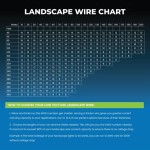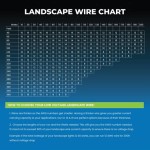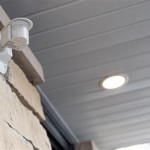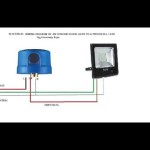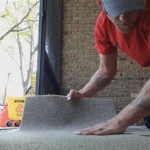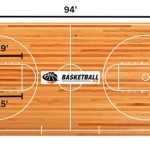Outdoor Ceiling Fans Without Lights: A Comprehensive Guide
Outdoor ceiling fans provide much-needed relief from heat and humidity on patios, porches, and other covered outdoor spaces. While many outdoor ceiling fans incorporate integrated lighting, models without lights are gaining popularity for specific applications and aesthetic preferences. This article delves into the benefits, selection criteria, installation considerations, and maintenance aspects of outdoor ceiling fans without lights.
Advantages of Selecting an Outdoor Ceiling Fan Without Lights
Choosing an outdoor ceiling fan without lights offers several distinct advantages. Simplicity in design is a primary benefit. Without integrated lighting, the fan's design can be more streamlined and less visually cluttered. This minimalist aesthetic often complements modern or contemporary outdoor spaces. Functionality is also focused. Eliminating the light fixture reduces the potential for light pollution, making these fans ideal for areas where ambient lighting is already sufficient or desired to be kept minimal.
Cost-effectiveness is another contributing factor. Fans without lights typically have a lower purchase price compared to those with integrated lighting, potentially reducing the overall project budget. Installation can also be simpler, thanks to fewer electrical connections and components. This reduction in complexity makes the installation process potentially faster and requires less specialized expertise. Finally, selecting a fan without lights provides freedom to customize lighting design. Homeowners can strategically position separate outdoor lighting fixtures to create the desired ambiance and illumination levels, independent of the fan's location.
The streamlined design can also translate into better energy efficiency. Without the additional energy draw of lights, even LED lights, the fan can operate more efficiently, resulting in lower energy bills over time. The absence of lights also minimizes the risk of light bulb burnout or the need for replacement, reducing maintenance requirements and costs associated with replacing bulbs in hard-to-reach outdoor locations.
Key Factors to Consider When Choosing an Outdoor Ceiling Fan Without Lights
Selecting the right outdoor ceiling fan without lights requires careful consideration of several factors to ensure optimal performance and longevity. Size is paramount. The fan's blade span should be appropriate for the size of the outdoor space. A fan that is too small will not effectively circulate air, while a fan that is too large can create excessive wind and discomfort. Guidelines for selecting the appropriate fan size based on square footage are readily available from manufacturers and retailers. Larger spaces necessitate larger blade spans and more powerful motors.
Material selection is crucial for durability. Outdoor ceiling fans are exposed to the elements, including moisture, sunlight, and temperature fluctuations. Therefore, choosing fans made from weather-resistant materials is essential. Common materials include stainless steel, aluminum, and certain types of high-density plastics. These materials are resistant to rust, corrosion, and fading. Blades made from ABS plastic or specially treated wood are also good options for outdoor use. Ensure that all components, including the motor housing and hardware, are specifically designed for outdoor applications and are rated for wet or damp locations.
Motor type and performance are also important considerations. Look for fans with high-quality, energy-efficient motors. DC (direct current) motors are generally more energy-efficient and quieter than AC (alternating current) motors. The motor's airflow rating, measured in cubic feet per minute (CFM), indicates the fan's ability to circulate air. Higher CFM ratings are desirable for larger spaces or areas with high humidity. Also, consider the motor's warranty, as this reflects the manufacturer's confidence in its product's reliability.
Style and aesthetics should complement the overall design of the outdoor space. While functionality is important, the fan should also blend seamlessly with the surrounding architecture and décor. Numerous styles are available, ranging from traditional to contemporary, to match various tastes. Blade finish and motor housing color options allow for further customization. Consider how the fan's style will harmonize with existing outdoor furniture, landscaping, and architectural features.
Installation and Maintenance of Outdoor Ceiling Fans Without Lights
Proper installation is essential for ensuring the safe and efficient operation of an outdoor ceiling fan without lights. It is generally advisable to hire a qualified electrician to perform the installation, especially if electrical wiring modifications are required. This ensures compliance with local building codes and safety regulations. The electrician can also assess the structural integrity of the mounting surface to ensure that it can safely support the fan's weight.
Before installation, carefully review the manufacturer's instructions and ensure that all necessary hardware is included. The fan should be securely mounted to a structurally sound ceiling joist or beam. If mounting to a standard electrical box, ensure that it is a fan-rated box designed to support the weight and vibrations of a ceiling fan. Use appropriate mounting hardware for the specific type of ceiling material. A downrod is often necessary to position the fan at the correct height for optimal airflow. Ensure that there is adequate clearance between the fan blades and any surrounding structures or furniture.
Regular maintenance is necessary to keep the fan operating smoothly and to prolong its lifespan. Periodically inspect the fan blades and motor housing for dust and debris buildup. Clean the blades with a soft cloth and mild detergent to remove dirt and grime. Lubricate the motor bearings as needed, following the manufacturer's recommendations. Check the tightness of all screws and connections to prevent rattling or wobbling. During periods of non-use, such as during the winter months, consider covering the fan with a protective cover to shield it from the elements.
Wiring connections should be inspected regularly for any signs of corrosion or damage. If any loose or damaged wires are found, they should be repaired or replaced by a qualified electrician. Proper grounding is essential for electrical safety. Ensure that the fan is properly grounded to prevent electrical shocks. If the fan is equipped with a remote control, replace the batteries as needed and store the remote in a dry location. By following these maintenance guidelines, you can ensure that your outdoor ceiling fan without lights provides years of reliable performance and enjoyment.
Consider the mounting location carefully. Avoid installing the fan in areas that are directly exposed to rain or snow, as this can damage the motor and other components. The fan should be installed under a covered porch, patio, or other protected area. If the fan is installed in a damp location, ensure that it is rated for damp location use. This means that the fan is designed to withstand moisture and humidity, but is not intended for direct exposure to water. For wet locations, a wet-rated fan is required. These fans are specifically designed to withstand direct exposure to rain and other elements.

Outdoor Ceiling Fan Patio Without Lights Garden Et White 132 Cm 52 034

Outdoor Ceiling Fans Without Lights

Outdoor Ceiling Fans Without Lights Are Damp Wet Rated For Indoor Areas Delmarfans Com

Outdoor Ceiling Fans Without Lights

Outdoor Ceiling Fans Without Lights

Ceiling Fans Without Lights Lamps Plus

Cyclone 60 Inch Outdoor Fan In White By Visual Comfort Co Collection At Destination Lighting Ceiling Fans Without Lights

Outdoor Ceiling Fans Without Lights Are Damp Wet Rated For Indoor Areas Delmarfans Com

4 Outdoor Living Details To Consider Ceiling Fans Without Lights Fan Farmhouse

Ceiling Fans Without Lights Hunter Fan
Related Posts

